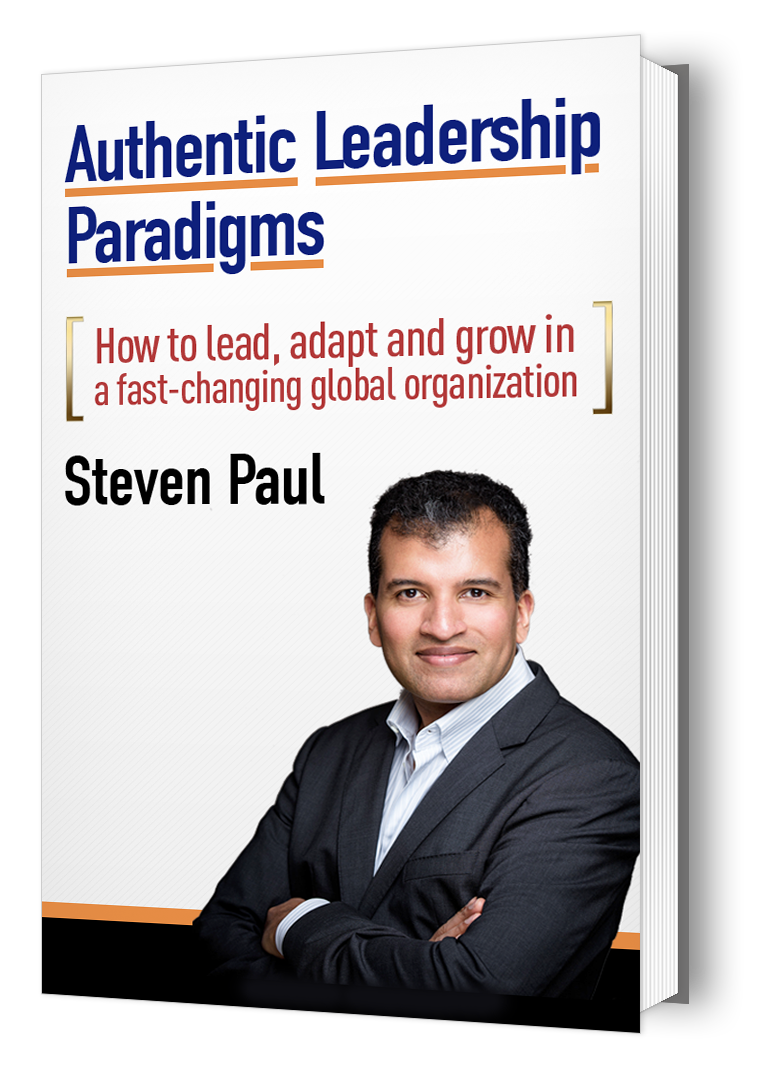Today’s business environment is unyielding and fast-paced. Businesses globally recognize that to drive down costs or drive new revenue streams and increase market capitalization, they need to cultivate the right mix of priorities. In my professional journey, I have had the opportunity to lead, support and collaborate with diverse leaders across sectors internationally.
A common theme highlighted by them was that today’s environment is fast-growth and expansion-driven. So how can you support your business to advance and be leading edge in today’s environment whilst boosting business performance? Let’s take a look at 10 pillars – that are interconnected – and see what you as a business firm can replicate – regardless of sector, size, scale and maturity.
Innovation and Passion for Growth
With fluctuating customer needs, demanding consumers and magnitude of competitive environment, innovation is the key to achieving market share. This is about coming up with new ideas and new ways of doing things. It is about driving differentiated value for clients and new revenue streams. Innovation that doesn’t benefit and serve your customers won’t help your business grow. To support in growth, consider generating a pipeline of ‘innovation ideas’ for execution. Adopt a combination of technologies and processes into your business’s value proposition of products and services. Cultivate and evangelize a passion for growth by stretching into uncharted business ventures and geographies. A passion or curiosity for growth brings a dynamic view of the marketplace—which then can be reshaped and re-created in order to compete.
Technology
Technology is increasingly becoming a multifaceted enabler in effecting change – whether this is inward focused within a business or outward focused via delivery of products and services. According to Accenture Technology Vision 2018, there are widespread opportunities available to companies to use technology at each level of the enterprise—from strategy through operations—to improve performance and move closer to the center of people’s lives. Diverse studies indicate an average 70% of businesses already seeing tangible results from digitization in market share increase and product innovation. A focus in the coming years is driving new levels of efficiency around digital, robotics and artificial intelligence. That means, synchronizing both machines and software systems to unlock cost efficiencies—thus driving up capacity to generate improved revenues. Depending on your sector and product-services, consider combining appropriate technologies such as autonomous vehicles, augmented and virtual reality, big data, machine learning, and mobile computing and even 3-D printing. Create relevant and valuable user experiences over time by building overarching digital architectures that enable adaptive interactions between machines, customers and workforce.
Customer Centricity
Customer centricity demands connectedness, growth, innovation and best service – where everything starts and ends with customers. Most business leaders describe their customer base as well-informed and/or empowered given the choices they have in the market. The concepts of loyalty are almost or fully obsolete—a perspective that’s particularly present in large enterprises, especially given the rise of alternative solutions by scale-ups. Therefore, it’s imperative for businesses to recalibrate their model to be customer centric.
This approach makes sense, as a Manager at Amazon explained: “Amazon’s objective is to become the world’s most customer centric company. The way to get there is growth; by growing and achieving economy of scale, and by providing world class service, Amazon will be able to constantly reduce prices for customers. All money Amazon makes is re-invested in growth and reduced prices, which helps our customers.”
Consider investing in new, personalized experiences for customers, via multiple smart touchpoints, helping grow core businesses by enhancing customer engagement. Launch forms of customer impact and experience initiatives such as Journey Mapping and take defined set of actions, at pace. The idea is to stay ahead of customers, not ahead of competitors.
Pace and Agility
This is about being able to respond rapidly and flexibly to customer demands, adapt quickly to market changes – internally and externally. It is about speed of execution, the ability to remain flexible and adaptable regardless of your business’ stage of growth. Consider developing and embracing agile leadership and values at its core, from people and culture, to structure, decision making and frameworks to embed technology, and products and services that are consequently value adding to customers. Building the right leadership team is essential to fostering agility.
Successful and adaptable businesses know when to accelerate and when to slow based on tangible indicators built into their processes and ways of working – that ultimately affect the customer. A key element is applying a decision framework and set of principles to progress an idea or action, at pace.
Improve, Continuously
Whilst continuous improvement maybe hard for most businesses because it means you’ll never be satisfied or settle for “good enough”, it is still vital especially with changing business and market needs. Continuous improvement support evolution of the products, services, workflows and health aspects of the business in order to become more optimal and efficient over time internally and on their products-services. Consider building a portfolio of continuous improvement opportunities for execution, and plug in indicators that illustrate a link to the P&L.
Navigate Through Disruption
As competition mounts, companies are rethinking their corporate structures—eliminating the middleman and sizing up smaller competitors. Studies indicate that global leaders are “concerned” as to whether their company will still be relevant and competitive in 2-5 years especially given the exponential rise in startups from the same or across industry – this is greater competition than enterprise-sized companies. Grab the opportunity to re-strategize and align with trends. Create new business models to drive differentiated value for your clients and new revenue streams. For example, Artificial Intelligence (AI) grows in every sector. Traditional retail giants are up against Amazon and Alibaba, which are using new business models to incorporate big data and AI algorithms to transform the space.
Invest in People. Build a Digital-Ready Workforce and Evolved Culture
Your workers are your biggest asset – regardless of type i.e., fulltime, contract etc. Not only are they critical to your day-to-day operations, they’re also your biggest competitive advantage. In this highly competitive market, it’s vital that you have the best workers on staff being as productive as possible in order to stay profitable now and in the future. Regardless of whether you are a scale-ups or a mature business, consider executing staffing strategies. Source, train and retain talent especially with digital-ready skills and encourage active collaboration and participation on trending technologies such as AI, machines and software. Evolve your business’s cultural to become more digitally aligned and tangible. Set a clear vision and have visible leadership involvement and develop a favorable environment with key mechanisms to reshape the culture to be digitally focused. For example, consider deploying change agents and empower employees to drive the culture mandate.
Simplify the Hierarchy
Whilst this might mostly apply to medium to large type of business firms, it is actually relevant to businesses of varying size and scale. Many businesses start out strong. In their early years, they’re great innovators with good customer service. However, as they grow they begin to add layers of complex management structures and bureaucracy, making the operating goals quite difficult. Smart business leaders simplify their corporate or scale-up organization structures for new paradigms – by reorganizing reporting lines and replacing old hierarchies with more-flexible arrangements that encourage collaboration and enable employees to have wider remit.
Partnerships
As competition increases and pronounced economic uncertainties, many companies form partnerships and alliances. Studies and trends indicate that business leaders are transforming their business firms by collaborating with third parties – in order to navigate the ecosystem. Consider defining your growth plan, and create a robust ecosystem of suppliers, distributors, start-ups, and customers that enables rapid scaling of new business models across the digital value chain. This ensures competitive robustness of your business.
Progressive Minded Leader
Uncertainty and accelerating competition has shaped the need for a new kind of leader. Leadership plays a key role in success of business and happens at all levels, not just at the top. Progressive leaders enable from the top, and this is successful when it spreads throughout the business. Progressive leaders regularly take bold stands and deliver extraordinary results, bringing everyone around them to a higher level of performance. They focus on connecting people to purpose and aligning multiple groups from every direction. They are authentic and open. Leaders like this bring out the best performance, creativity and expression in everyone. The most successful companies recognize effective leaders (at all levels of the organization) and harness them to maximize results. With the demanding and shifting business environment it requires a change in how senior leaders think and act albeit the governance and political structures within the organization. While change isn’t easy, and it may be challenging for a leader who has been running a successful business, the biggest pitfall is a leader wedded to past successes and traditional thinking and practices. Leaders who do not continually reframe their mindset to fit the rapidly changing times will be left behind. Instilling an entrepreneurial spirit supports progressiveness and adaptability to changing environments.
In conclusion
How many of these pillars can you confidently say your business is applying? Are you able to identify particular areas you want to embrace and focus?
Let’s take a look at Amazon and founder Jeff Bezos, how they have grown the company into a multi-billion business. Amazon have focused on a 4-pillar strategy that any business can adopt, which includes customer centricity, innovation, agility, continuous improvement. Supporting this are their 14 leadership principles which are continuously promoted and ingrained into employees’ ways of operating, which then supports the overall business growth goals. An Amazon manager explained this simply: “what makes Amazon different is the use of 14 leadership principles; we take them very seriously. The key is that we only hire people who live and breathe these principles.”


